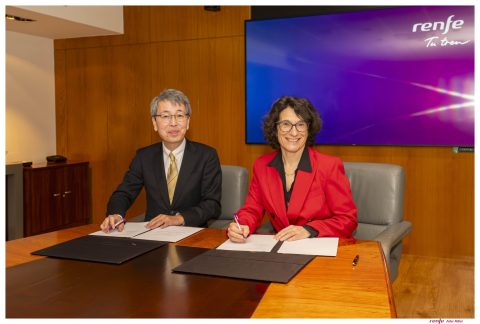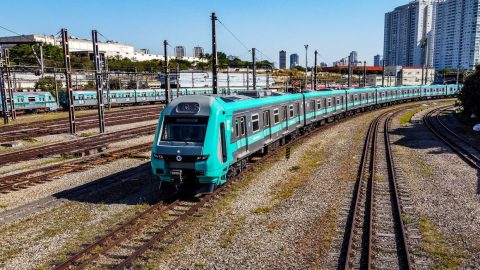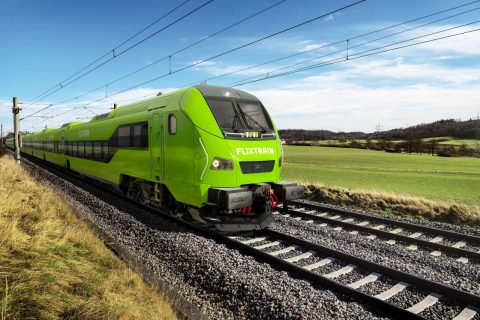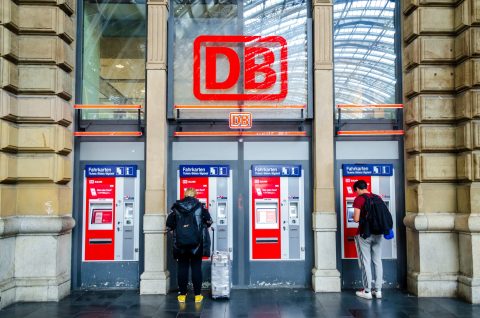How Alstom is betting on Poland to reshape its European production map — to the tune of €115m
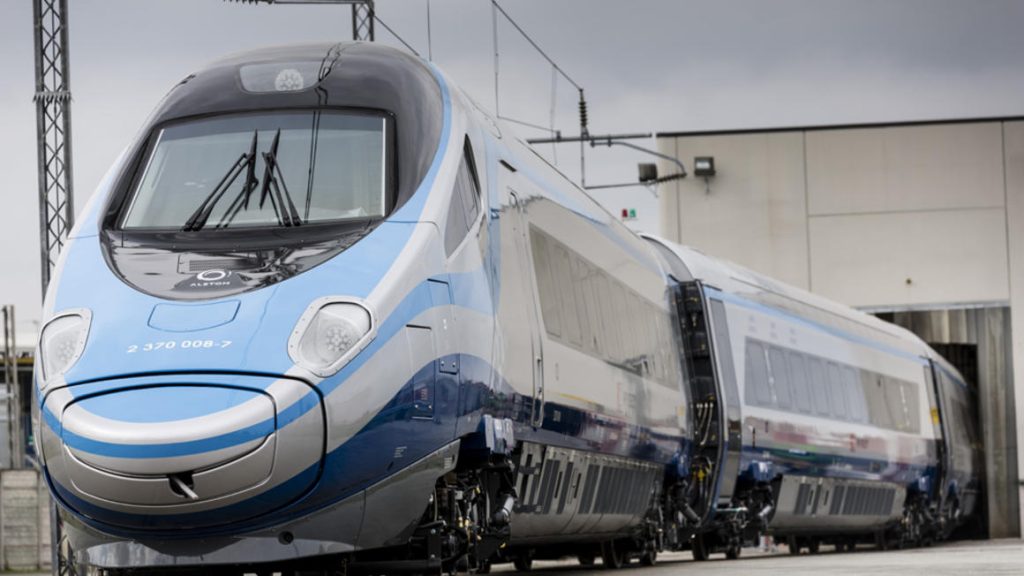
Alstom is investing €115 million into the expansion of its rolling stock factories in Poland as it continues to ramp up its production capacity in Eastern Europe. That’s part of a five-year time frame, but it is a sign that the French manufacturer is radically shaking up its European manufacturing bases in an ever-more competitive global rail market.
Alstom has announced it is investing some 487 million Polish Zloty (€115 million) in the development of its Polish production sites over five years. It’s worth stating that this figure starts from 2022 and runs till 2027, and PLN 320 million (€75.6 million) has already been allocated for infrastructure expansion for new projects and site modernisation in the last three years. So far, much of that money has been spent on setting up a new aluminium welding line at its Wrocław site, which means the unit there has been able to expand its production beyond carbon steel products.
That leaves 167 million zloty (€39.4 million) left for the next two years, with much of that intended to develop its site in Chorzów. In a dramatic expansion of the site, Alstom says that will mean building three new halls with a total area of nearly 8,000 square metres and a railway track. They will be decked out with modern production lines and machinery which will be used to build both double-decker and single-deck trains for all over Europe – from Denmark, through Romania, to Germany – to the tune of over 200 units.
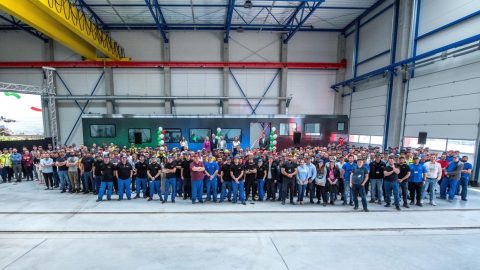
« With new production capacities in our Polish sites, we are planning to execute an ambitious portfolio of orders for international clients,” said Beata Rusinowicz, Managing Director of Alstom in Poland, Ukraine, and the Baltic States. “This includes the production of Coradia Stream trains for Denmark, Romania and Bulgaria, as well as double-decker Coradia Max trains for German rail operators from the Bremen – Lower Saxony (LNGV), Baden-Württemberg, and Main-Weser networks. »
The execution of the new contracts, particularly those in Chorzów, will apparently also now be possible due to the planned expansion and adaptation of one of the existing halls at the site. For over six years Alstom has been using the location to produce nearly 1,300 cars for 324 Coradia Stream electric multiple units, all bound for the Italian market. But it appears Alstom is now set on boosting that figure in the coming years – and not just for Italy – as it makes Poland a key base for its central and eastern European operations.
Alstom’s push into Eastern Europe
Indeed, the French rolling stock giant is systematically overhauling its European manufacturing footprint – and much of the future now lies east. While the company recently confirmed it would keep its historic Derby site in the UK open and launched a €150 million high-speed rail expansion in France, it is simultaneously closing plants and slashing capacity in Germany, shifting production lines further east in search of long-term cost reductions.
That pivot is visible also in Hungary, where Alstom is in the final stages of a €14.5 million investment programme at its Mátranovák bogie frame plant. Acquired in 2021 and backed by the Hungarian government’s Mátranovák 2030 strategy, the site is undergoing major modernisation to become Alstom’s largest bogie frame manufacturing facility in Europe, with plans for a 40% production capacity boost by the end of the year.
But back in Poland, Alstom is really pushing forward. Compared to where Alstom stood in Poland a decade ago, the company’s current presence has markedly changed. Ten years past, its key sites in Chorzów and Wrocław primarily served domestic or nearby markets, working on lower-capacity product lines such as regional train units and metro cars. By contrast, Alstom operations in Poland as of 2025 involve multi-site synergies across Chorzów, Wrocław, and Świętochłowice – covering everything from car body production and metro subassemblies to final assembly and export preparation. And the difference in physical footprint is dramatic.
Between just Chorzów and Świętochłowice, Alstom has announced or completed over 18,000 square metres of new production halls in the last two years – more than doubling the indoor capacity of some of these sites. The Świętochłowice facility alone, expanded in 2024, means the site can simultaneously service up to six train cars and is now configured to handle the full equipping of new train units.
Cuts closer to home
What’s driving this shift is as much about external pressure as it is internal strategy. Alstom’s decision last year to pull out of Görlitz and scale back operations in other parts of Germany follows a broader trend of European rail manufacturers struggling to compete on cost. The Görlitz site, which had been building train car bodies since the 1800s, was inherited through Alstom’s acquisition of Bombardier Transportation in 2021. But less than four years later, the company declared it “over capacity” and announced plans to shut it down entirely by 2026, cutting around 700 jobs.
Some production work – such as remaining German and Israeli orders – is being wound down or relocated, while most of the site itself is being sold to arms manufacturer KNDS, which will use it to build parts for tanks and armoured vehicles. Beyond Görlitz, Alstom has said no new trains will be built at its Henningsdorf site near Berlin, which will instead shift to R&D, digitalisation, and service. Kassel will keep some manufacturing, but focus more on modernisation, while repair work from Mannheim is being folded into Henningsdorf.
Meanwhile, development for alternative propulsion is being transferred to France. All of this falls under a broader regional shake-up as Alstom merged its DACH and Nordic operations under a new Berlin-based leadership team headed by former Siemens Gamesa COO Tim Dawidowsky – who was tasked with bringing « increased efficiencies » amid the vast regional shake-up.
Long-term planning
The rationale is clear. Germany remains one of the most expensive industrial environments in Europe, with soaring energy prices, high labour costs, and regulatory burdens that make it increasingly difficult to maintain large-scale rolling stock production. Alstom, already grappling with the sprawling legacy of its Bombardier acquisition, has found itself carrying more factories than orders — and fewer ways to justify keeping them open.
At the same time, global pressure is mounting. Rivals like Siemens Mobility and Hitachi are scaling up their European presence, while China’s state-backed CRRC continues to undercut on price and outpace on delivery. Between 2021 and 2023, the share of global markets accessible to European rail manufacturers shrank to just 59%, costing the industry an estimated 2.9 billion euros annually, according to UNIFE. In this landscape, survival means building cheaper — which is exactly what Alstom is doing by expanding in Poland and Hungary while trimming back in Germany.
“We are working hard to meet a growing demand for high-quality rolling stock in both the European and global markets,” said Beata Rusinowicz, Alstom’s regional director. “The Polish teams have played a key role in both designing and producing new trains, components and solutions that make mobility safe, comfortable, environmentally friendly and accessible.” For Alstom, that role is only set to grow — as Poland shifts from support act to centre stage in the company’s European production network.
Read more:

